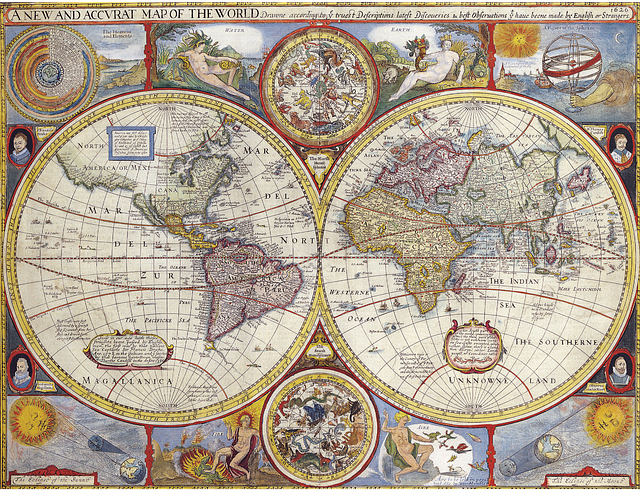Shortly after he left office, former President Donald J. Trump shared apparently classified information about American nuclear submarines with an Australian businessman during an evening of conversation at Mar-a-Lago, his private club and residence in Florida, according to two people familiar with the matter.
The businessman, Anthony Pratt, a billionaire member of Mar-a-Lago who runs one of the world’s largest cardboard companies, went on to share the sensitive details about the submarines with several others, the people said. Mr. Trump’s disclosures, they said, potentially endangered the U.S. nuclear fleet.
Federal prosecutors working for the special counsel, Jack Smith, learned about Mr. Trump’s disclosures of the secrets to Mr. Pratt, which were first revealed by ABC News, and interviewed him as part of their investigation into the former president’s handling of classified documents, the people said.
According to another person familiar with the matter, Mr. Pratt is now among more than 80 people whom prosecutors have identified as possible witnesses who could testify against Mr. Trump at the classified documents trial, which is scheduled to start in May in Federal District Court in Fort Pierce, Fla.
Mr. Pratt’s name does not appear in the indictment accusing Mr. Trump of illegally holding on to nearly three dozen classified documents after he left office and then conspiring with two of his aides at Mar-a-Lago to obstruct the government’s attempts to get them back.
But the account that Mr. Trump discussed some of the country’s most sensitive nuclear secrets with him in a cavalier fashion could help prosecutors establish that the former president had a long habit of recklessly handling classified information.
And the existence of the testimony about the conversation underscores how much additional information the special prosecutor’s office may have amassed out of the public’s view.
During his talk with Mr. Pratt, Mr. Trump revealed at least two pieces of critical information about the U.S. submarines’ tactical capacities, according to the people familiar with the matter. Those included how many nuclear warheads the vessels carried and how close they could get to their Russian counterparts without being detected.
It does not appear that Mr. Trump showed Mr. Pratt any of the classified documents that he had been keeping at Mar-a-Lago. In August last year, the F.B.I. carried out a court-approved search warrant at the property and hauled away more than 100 documents containing national security secrets, including some that bore the country’s most sensitive classification markings.
Mr. Trump had earlier returned hundreds of other documents he had taken with him from the White House, some in response to a subpoena.
A spokesman for Mr. Trump did not immediately respond to a request for comment. A spokesman for Mr. Smith declined to comment. Representatives for Mr. Pratt did not immediately respond to requests for comment.
Even though Mr. Pratt has been interviewed by prosecutors, the people familiar with the matter said, it remained unclear whether Mr. Trump was merely blustering or exaggerating in his conversation with him.
Joe Hockey, a former Australian ambassador to the United States, sought to play down Mr. Trump’s disclosures to Mr. Pratt in a phone interview on Thursday.
“If that’s all that was discussed, we already know all that,” Mr. Hockey said. “We have had Australians serving with Americans on U.S. submarines for years, and we share the same technology and the same weapons as the U.S. Navy.”
Still, Mr. Trump has been known to share classified information verbally on other occasions. During an Oval Office meeting in 2017 shortly after he fired the F.B.I. director James B. Comey, Mr. Trump revealed sensitive classified intelligence to two Russian officials, according to people briefed on the matter.
Well into his presidency, he also posted on X, formerly known as Twitter, a classified photo of an Iranian launch site.
The indictment in the documents case also accused Mr. Trump of showing a classified battle plan to attack Iran to a group of visitors to his club in Bedminster, N.J. Prosecutors claim that a recording of the meeting with the visitors depicts Mr. Trump as describing the document he brandished as “secret.”
Mr. Trump has not had access to more updated U.S. intelligence since leaving the presidency; President Biden cut off the briefings that former presidents traditionally get when Mr. Trump left office in the wake of Mr. Trump’s efforts to overturn the election and the attack on the Capitol by a pro-Trump mob on Jan. 6, 2021.
“I just think that there is no need for him to have the intelligence briefings,” Mr. Biden said at the time.
“What value is giving him an intelligence briefing?” he said. “What impact does he have at all, other than the fact he might slip and say something?”
Mr. Trump’s interactions with Mr. Pratt appear to fit a pattern of the former president’s collapsing his public office and its secrets into his private interests.
Mr. Pratt cultivated a relationship with Mr. Trump once he became president. He joined Mar-a-Lago in 2017, then was invited to a state dinner and had Mr. Trump join him at one of his company’s plants in Ohio.

